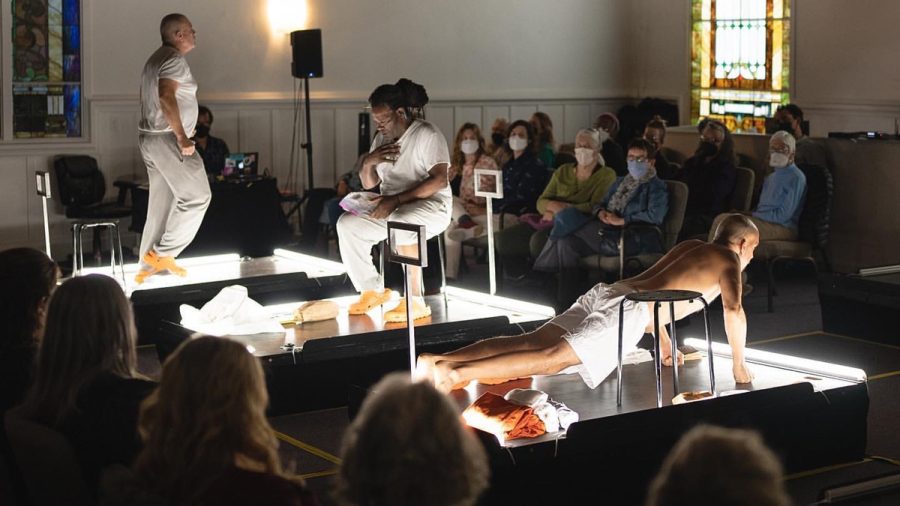Play aiming to end solitary confinement comes to St. Louis
“The BOX” will be performed July 27-29 at The Big Top, 3401 Washington Ave. Photo: Hamza A. Shallwani @hamzwani.pictures
Published July 22, 2022
“The BOX” is a critically acclaimed play with a powerful message about solitary confinement as torture. The playwright is Sarah Shourd, a social justice activist and journalist, who suffered through 410 days of solitary in an Iranian prison in 2009-10.
When she returned to the states, Shourd found that solitary confinement was — and still is — endemic in the United States. She set about trying to bring it to an end by writing and producing “The BOX,” which debuted in 2016.
Shroud now is taking the production on a 10-city tour that includes a stop July 27- 29 at the Big Top in Grand Center. The national tour is sponsored by the Pulitzer Center, whose founders are St. Louisan Emily Pulitzer, and Jon Sawyer, former St. Louis Post-Dispatch Washington Bureau chief. Arch City Defenders are a local sponsor as well.
The Jewish Light caught up with Shourd in advance of the tour’s stop in St. Louis. The interview has been edited for clarity and length.
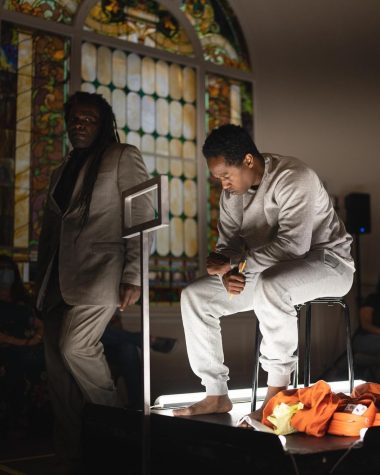
You have spent most of your adult life covering social justice issues. What matters drew your attention before solitary confinement? Was solitary confinement on your radar at all before your experience with Iran?
In my 20s, after the terrorist attacks of September 11, 2001, I became involved in the antiwar movement while finishing my undergraduate work at University of California, Berkeley. During this time, I was also an International Human Rights Observer. In 2008, I moved to Damascus, Syria, to study Arabic, teach English to Iraqi refugees, and start out as a journalist.
A year later, my life took a dramatic turn when I was captured by Iranian border guards while hiking near a tourist site in Northern Iraqi Kurdistan and imprisoned as a political hostage. I was psychologically tortured and imprisoned in incommunicado, solitary confinement for 410 days at Iran’s Evin Prison.
When I was released in 2010, I immediately started reaching out to incarcerated people in solitary confinement U.S. I wanted to understand what had been done to me, and how to heal, by talking to people that understood.
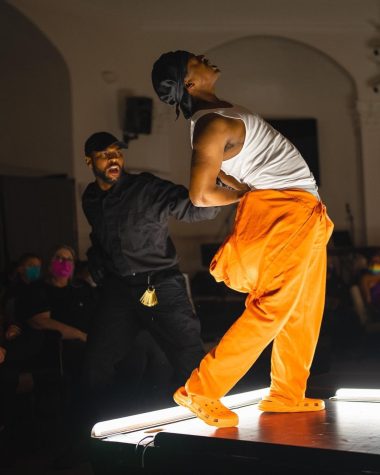
How was your solitary confinement experience different from the experiences of the prisoners you met and worked with in the U.S.?
The practice itself is very similar everywhere, 22 to 23 hours in a cell with a window that’s covered with a perforated plate.
We practice solitary in the United States on a far greater scale, astronomically greater than Iran, or any other country. Even a lot of Republicans, “tough-on-crime” people, are saying that this has not worked. It’s not serving the public’s desire for safety. It’s doing the opposite.
Among Western industrialized nations, the United States is the only country to make extensive use of long-term solitary confinement. In most European countries, the number of people held in segregation beyond a few days or weeks is in the hundreds, rather than the tens of thousands. Extended periods of isolation are seen by most as a human rights violation; even those few incarcerated individuals who are separated from others for safety reasons are provided with activities and contact to reduce their isolation.
Many journalists write stories about social justice issues for newspapers, magazines and book publishers. What made you think a play would be the best way to go?
Journalism didn’t feel visceral enough. I don’t think people’s minds are changed by facts. I think that people will find the facts that support the way they feel. And the way they feel is based on the experiences they have had in life. I think you need a new feeling to open yourself up to new facts.
Ginning up enthusiasm for prison reform can be a tough sell. Many people think that if someone is already in prison, it is obvious they have done something wrong. How do you think about bridging that empathy gap?
The reason we’re doing this tour is to get people’s attention and inspire them to rethink that narrative. “The BOX” is a play about solitary confinement written by a survivor in collaboration with other survivors, and nearly half our cast are survivors of incarceration and torture. This is a moment to ask ourselves: What is it about our culture that we believe that separation is a necessary thing that makes us safer?
This tour is how we get these stories into the hands of policymakers. It is how we connect survivors with legislators across the country.
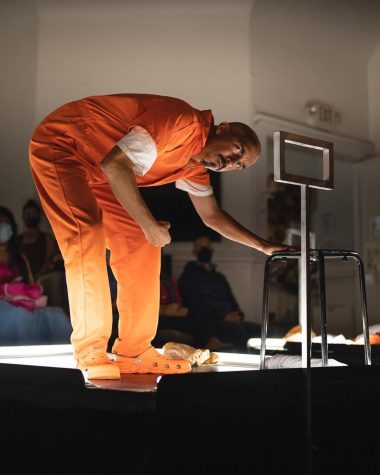
Many people have come to believe that prison brutality/torture techniques fall heaviest on prisoners of color. Have you found that to be true?
This is absolutely true. The brutal practice of solitary confinement disproportionately affects incarcerated people of color. Black people make up 13% of the U.S. population and yet 45% of people in solitary are black (see @abolishsolitarynow). This is not surprising because the carceral state has its roots in slavery, with slave patrols and chain-gangs as the origins of our police force and prisons. This is a horrific legacy that we have not reckoned with in this country nor repaired.
How have audiences responded to the tour so far? What reactions have surprised you, if any?
The play has been produced three times now in California, including in the former penitentiary on Alcatraz Island, and has already had an impact on reducing solitary confinement. Former California State Senator Mark Leno says that the 2016 World Premiere of “The BOX” created momentum that contributed to the passage of his bill to end the use of solitary in juvenile facilities in California.
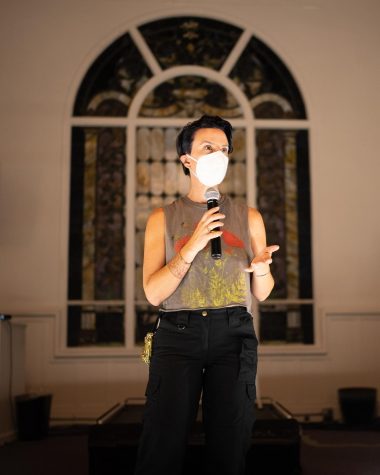
Now our goal is to bring in new audiences, influence stakeholders and knit together our amazing community partners.
After each performance there will be an engagement circle where formerly incarcerated and system-impacted folks are invited to share first. We have been gratified by the reaction: “It was so real,” wrote one audience member. “This was the closest I’ve ever come to being able to understand what prison is like.”
Richard H. Weiss, a longtime Post-Dispatch editor, is now editor of Before Ferguson Beyond Ferguson, a non-profit racial equity storytelling project.
“The BOX”
When: 7:30 p.m. (doors at 7 p.m.) July 27-29
Where: The Big Top, 3401 Washington Ave.
How much: $20-$50
More info: endofisolationtour.org



